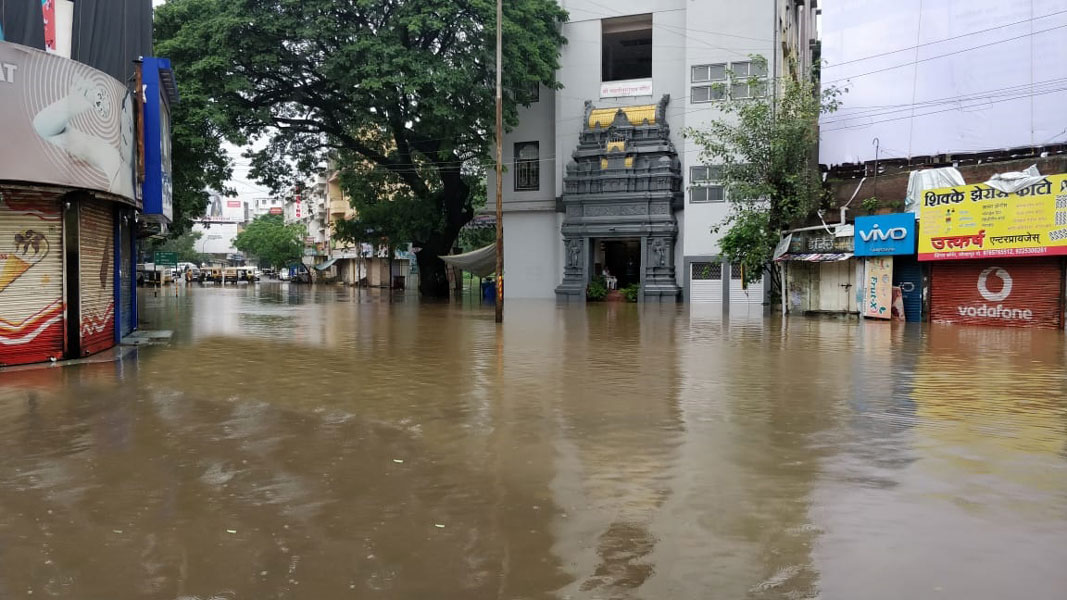Providing relief to flood victims
Massive, unprecedented floods wreaked havoc taking a heavy toll on the people of South Maharashtra, North Karnataka and Goa during the first week of August. The Rotaractors of RID 3170 formed the Rotaract Task Force (RTF) consisting of four teams and worked round-the-clock to provide relief to hundreds of flood victims, mostly in the rural belts.
So far, we have organised over 50 medical camps in which patients were given medicines and syrups. Critical patients were given treatment at hospitals.
— DRR Rahul Shivaji Mohite, RID 3170
Recounting the flood horrors, DRR Rahul Shivaji Mohite, RID 3170, says, “more than 50 villages in Sangli rural areas including Dudhondi, went under water that was gushing from all sides. We were helpless and there was no one to help us that night. There were no government officials, no rescue mission, no boats or life jackets… We were left in the lurch to face the wrath of the monsoon.” However, the Rotaractors organised themselves into rescue teams and spread out deep into rural areas to save people and livestock.
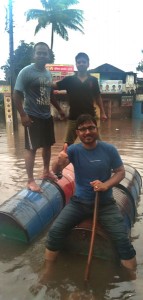
In Dudhondi village and nearby areas, “we would have rescued around 150–170 people and more than 500 livestock. Unlike the situation in villages, the urban people in Kolhapur and Sangli were not very badly affected as they made good use of the city infrastructure there,” says Mohite. The four RTF teams consisting of not less than 30–40 Rotaractors each mounted an elaborate search and rescue mission across Kolhapur city, the surrounding rural areas, Sangli city and its rural belt along the Krishna river which was in spate. Other places such as Kumta and Belgaum in Uttar Kannada and parts of Goa also reeled under heavy floods.
A well-calibrated response
In the immediate aftermath of the deluge, the rescue missions had a field day in reaching out to remote villages where no government official had ever stepped in. “Our priority was to save lives in the first 2–3 days after the calamity. Then we provided medical supplies to the flood victims to protect them from waterborne diseases. Once the water receded, we took up a massive cleaning operation at government schools which lay in ruins and the entire classroom facilities were gone, washed away by floods,” he explains.
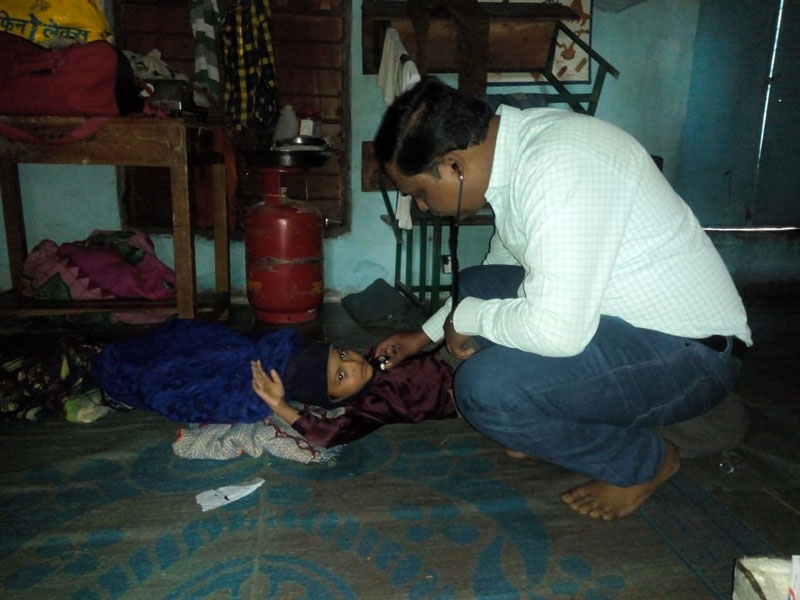
Rotaractors from RACs Krishna Riverside, the home club of Mohite, Krishna Valley and Walchand College of Engineering, all from Sangli district, along with 11 other Rotaract clubs from Kolhapur, have embarked on a twin-task of relief distribution as well as collection and distribution of of household material to help the needy. Rtr Rutuja Kore from Purli village in Sangli district, had to shift his entire family to another place after his house collapsed, but luckily no one was injured. “Despite personal loss, he worked with rare zest as part of the rescue mission,” prides Mohite.
Four collection centres at Kundal, Sangli city, Shirol and Kolhapur city are taking care of logistics in distributing relief supplies including clothes, medicines and packed food to the flood-hit areas.
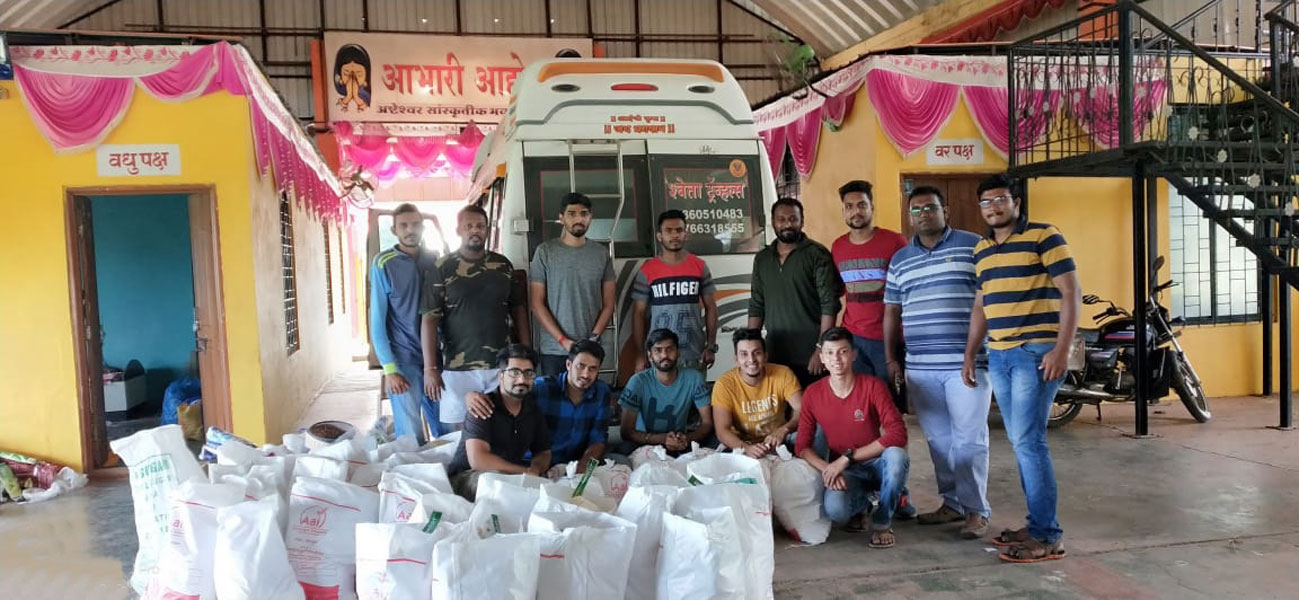
So far, this district has organised over 50 medical camps in which patients were given health check-up and medicines to ward off diseases. “In Dudhondi, three medical camps were held benefitting over 2,000 villagers. Critical patients were given injections, medicines and follow-up consultation.”
Rotarians help too
In bigger cities like Kolhapur, where a good number of Rotary clubs are located, help came in the form of both cash and kind from Rotarians of these clubs to help the victims.
All the relief work is being done through individual efforts of Rotaractors who collect material from houses, apart from donations by large-hearted people in Sangli district.
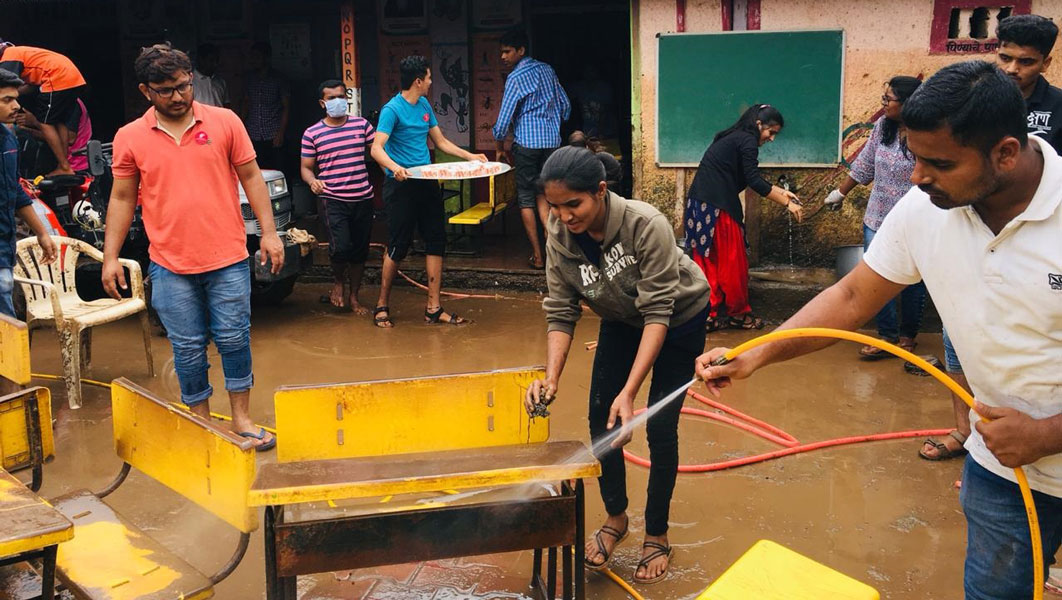
RAC Jaysingpur in the Kolhapur rural area has set up a relief camp that could accommodate over 200 people. In Sangli rural belts along the Krishna River, four relief camps that could house anywhere between 500–2,000 people were set up by the government. “We coordinate with the government agencies and officials at the shelter camps to distribute relief material,” adds Mohite, as the relief work is still going on.

